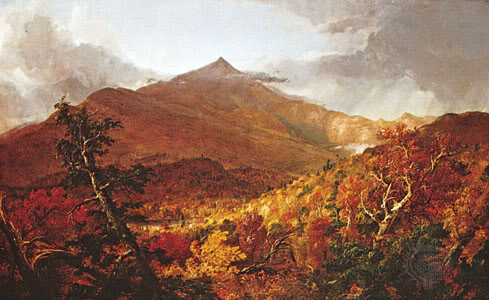Lecture No. 4
“It is as if the ordinary language we use every day has a hidden set of signals, a kind of secret code” – William Stafford
To recap on last week’s lecture: Men’s Rights Advocates should not be afraid to play around with words; to reframe debate; to recast conventional linguistic usages however we see fit. Don’t be afraid to make a game out of it. Use words – and the meanings you choose to ascribe to them – to mock, humiliate, and confuse your enemies. Here’s a good example – it makes use of typical feminist phraseology, but with one major difference:
Not all patriarchs are like that. I am a patriarch – and proud of it – but that doesn’t mean that I, personally, am responsible for what other patriarchs do, particularly not those radical patriarchs. But patriarchy isn’t a monolithic entity. There isn’t only one kind of patriarchy. There are lots of different types of patriarchs who have different views.
Note that defining yourself as a patriarch need not imply that you define yourself as feminists think that patriarchs should be. Feminists are not linguistic arbiters; you are absolutely free to call yourself a patriarch using your own definition of the term, which may or may not coincide to some extent with their definition. Whatever the case, though, you certainly don’t need to explain which qualities you possess that, in your mind, make you patriarchal. However, upon announcing that you are a patriarch, you may find feminists attempting to trick you into giving some definite shape to your patriarchy; the shape having already taken form in her mind, her task now is to get you to acknowledge it. She will say something emotive like, “oh, so you think men should just be able to rape women with impunity?”
Your initial response, of course, will be a furrowed brow. Then you will say, “of course I don’t think that. And yet I am still, most certainly, a patriarch.”
In this example, you could define patriarchy any way you please; having decided in advance that feminism is non-credible, you have dismissed altogether any feministic notion of what patriarchy is. You could even, if you like, define yourself as a patriarch on the grounds that you support equality between men and women. Yes, that kind of wordplay will wind them up no end, because feminism depends upon a peculiar configuration of words and meanings, which may not be circumnavigated without signaling a threat to the ideology’s power base.
Does the suggestion above sound preposterous? Well, I can but refer you to a real example of a social movement, the success of which has depended, for the most part, on its adroitness at linguistic manipulation. I am speaking, of course, of feminism, the proponents of which have made it their business to recast perceptions of reality through the redefinition of words. But this weapon is available to all those who are marginalized; it is the establishment which must defend its orthodoxy, not the outcasts! And while feminists once made great use of this strategy on the linguistic battlefield, it has become a point of vulnerability for them now that they control the machine, rather than rage against it. Now, you see, they must consolidate their gains; they must conserve what they have created; and thus, they are placed on the defensive, guarding their etymological orthodoxies from those who beg to differ. As I noted in the first lecture, their capacity for controlling perceptions of reality is faltering. The iron is hot. It is time to strike!
But, have I been too quick to dismiss the definition of feminism as offered up by feminists? I think I may have been. Even essentially contested concepts, as W. B. Gallie referred to them, must have meanings which are greater than normative, else communication about them would be rendered impossible. That is – there must be some amount of general consensus over what feminism is, between feminists and anti-feminists, or we would not be able to argue about it! Even despite the differences between a feminist’s view of feminism and of our own, some shared content must exist at some level, or we would be talking about entirely different things. They might be talking about the feminist movement, while I am talking about horse-rearing, although we both refer to our respective subjects as ‘feminism’ – but we wouldn’t have much to say to each other, would we, if this were the case?
So, I shall posit the following as a universally applicable definition of feminism; that is to say, it must fit everyone’s criteria for what feminism is, in spite of the different perspectives that different people hold on its nature. It is a suitably limited definition, since it can encompass only those parts of feminism which all definitions hold in common. So, here it is: feminism is the project for increasing the power of women.
That, then, is what everybody who discusses feminism holds in common regarding the concept, whether they are supportive, skeptical, or nihilistically indifferent. No feminist, I think, would deny that this is, at the very least, the ‘bare bones’ of feminism, even if she would prefer to flesh it out in a lot more detail. But that will not do, for beyond this narrow inference, we disagree with each other. To be as objective as possible, then, we must take only that which everybody agrees upon, and that is our universally applicable definition.
Note that there is no mention of equality. This is because, as I uncovered last week with the help of one Nick Levinson, there are a number of feminists who explicitly did not pursue equality, but supremacy. So, equality cannot fit into the universal definition of feminism, since certain feminists themselves – who were very famously, unequivocally feminist – disavowed it. To say that feminism is ‘about equality’, then, would be to place oneself in diametrical opposition to several extremely influential feminists! And why, that would be … misogynistic!
Nor can feminism be said to be the project for increasing the power of women relative to men, since, in this counter-feminist’s view, feminists are often quite content to increase the power of women in an absolute sense. That is, they endeavor to grab all they can for women, without reference to the status of men. The phrase ‘relative to men,’ then, only serves to imply that women are power-less relative to men at present, thus casting feminism in an unfairly favorable light. In reality, once women do achieve power which is at an equal or equivalent level to that of men, the demands of feminists do not stop. What we find is that female power becomes entrenched, and extended, and when it surpasses male power, this is simply referred to as ‘parity’ and ignored by feminists – at least, when they are not gloating over men’s newfound powerlessness.
Nor are we able to list, in our universal definition, the specific areas of life, or spheres, in which the feminist project applies. This is because feminism is inherently universalizing; it seeks to colonize and dominate every single facet of life where men and women meet. It aims for domination in every sphere of life, actual and potential.
You may disagree with some of the points above, particularly if you are supportive of feminism. But this does nothing to change our universal definition, because all we can say about those points is that they are contentious. That is, feminists and non-feminists, who are educated about feminism, disagree about these aspects of feminism, and it would simply be biased to take one or the other view for granted. That would be like consulting only Jacobins on the historical accomplishments of the Jacobin Club, or like canvassing only conservatives to explain modern liberalism. It would be a good example of poor methodology, and would help us very little in our search for truth. Right? So then, our universally applicable definition cannot be expanded beyond that which we stated before: feminism is the project for increasing the power of women.
We must not be swayed by feminist attempts to deny the universalizing tendency inherent to feminism. In their attempts to win the debate over what feminism is, feminists are notorious for abridging their own ideology to a nub of its whole, and presenting their support for – and your dissent from – feminism as resting entirely on a single issue. Let me give an example, in which you are confronted by the Appeal to Franchise. You have just stated that you do not support feminism. Your feminist opponent’s next move is to reduce the entirety of feminism to women gaining the right to vote – thus implying that you must oppose this, since you claimed to oppose feminism. You must simply remind all onlookers that feminism is about more than this and cannot be reduced to a single item as she has tried to do. You can openly state your support for that single item – in this case, the vote – while nevertheless maintaining your antipathy towards feminism, this being in no way reducible to women’s right to vote.
Essentially, your conscience is clear, and you are free to label yourself a non-feminist – and even, an anti-feminist – sans the implication that you therefore support every single thing that feminism opposes.
So, to recap: the only thing we are all going to be able to agree on is that feminism is the project for increasing the power of women. As you may have noticed, feminists go a little further than this when speaking about what they think feminism is, and they shall have plenty of half-truths and obfuscations to offer up if you ask them politely enough – though remember, it’s not their job to educate us about these things.
As such, we may leave them to their own fluffy fantasies, and move beyond the universal definition to one which more accurately accounts for men’s experiences of the world.
So, here is the definition I offer up: “feminism is the most recent, and presently the most culturally dominant form of Gynocentrism. It is a victim ideology which explicitly advocates female supremacy, at every facet of life in which men and women meet; it does so in accordance with its universalizing tendency, and so it does so in each sphere of life, including but extending beyond the political, social, cultural, personal, emotional, sexual, spiritual, economic, governmental and legal. By female supremacy, I refer to the notion that women should possess superiority of status, power and protection relative to men. It is the dominant cultural paradigm in the Western world and beyond. It is morally indefensible, although its adherents ensure that their hegemony goes unchallenged through the domination of societal institutions and the use of state violence.”
In response to last week’s lecture, Primal offered up his own definition of feminism, which is not quite the same as mine, but the two are certainly complementary:
Gender-feminism is an overarching ideology built on a stack of bald-faced lies. As the primary reverse-sexist superstition of Post Modern age, it forms the foundation for female sexual supremacy in the name of ‘gender’ equality. Like other half-baked Utopian fantasies, it is totalitarian to the core. It is formed from a witch’s brew of recycled but dis-credited ideological relics from the trash heap of history…relics like Marxism, Romanticism and Classism. It’s proponents proudly destroy well-established standards of scholarship to force others to take the ideology seriously. It’s adherents have spread like carcinogenic pathogens in authoritarian institutions…that is wherever power is perverted for political reasons. It’s philosophy is nonsensical, circular, and self-serving. As the primary moral foundation for the mainstream hate groups which operate in the name of Women’s Rights worldwide, gender-feminism is a dangerous dogma and one that has no place in civil discourse.
Both of our definitions are rather lengthy, although I think it is useful to have a statement of exactly what we mean by the term. It could be much shortened and presented as follows: feminism equals female supremacism.
That the shortened version is more memorable is offset by its unfortunate implications that i) only women are feminists, and ii) all women support feminism. Neither i) nor ii) is correct. The charge of supremacism alone is not really sufficient for our purposes; it leaves too much left unsaid regarding what this supremacism is, and about the success rate of feminism so far. For shorthand purposes, it will do, but it should be remembered that it is a reduction of broader definitions as worked out here and elsewhere.
What may be more useful for our purposes in presenting our view of what feminism is is a brief statement of its goals. Feminism essentially seeks the following goals:
(1) The expropriation of resources from men to women.
(2) The punishment of men.
(3) To increase (1) and (2) in terms of scope and intensity indefinitely.
I feel that such a definition will strike a nerve with feminists themselves – because it hits a little too close to home. That the real-world effects of the feminist project have indeed been (1) and (2), and that these have increased in scope and intensity over the years (3) is frankly, irrefutable.
Time has yielded the truth about what happens when feminist-minded women come to occupy the most powerful positions in society, and that is that Men’s Rights are systematically trashed. The more power that feminists have, the more new laws are created to accomplish greater confiscation of men’s property and intensifying violations of their liberty, bodily integrity, and lives.
But there is hope. For it is deeds, not words, that shall speak our enemies. Have a pleasant weekend, everyone.
Adam
Further Reading:
Exposing Feminism. Language manipulation
GYNOCENTRISM THEORY LECTURE SERIES:
1. Staring Out From the Abyss
2. The Same Old Gynocentric Story
3. Refuting the Appeal to Dictionary
4. Pig Latin
5. Anatomy of a Victim Ideology
6. Old Wine, New Bottles
7. The Personal, as Contrasted to the Political
8. Chasing Rainbows
9. False Consciousness & Kafka-Trapping
10. The Eventual Outcome of Feminism, Part I
11. The Eventual Outcome of Feminism, Part II
12. How to Break a Dialectic












